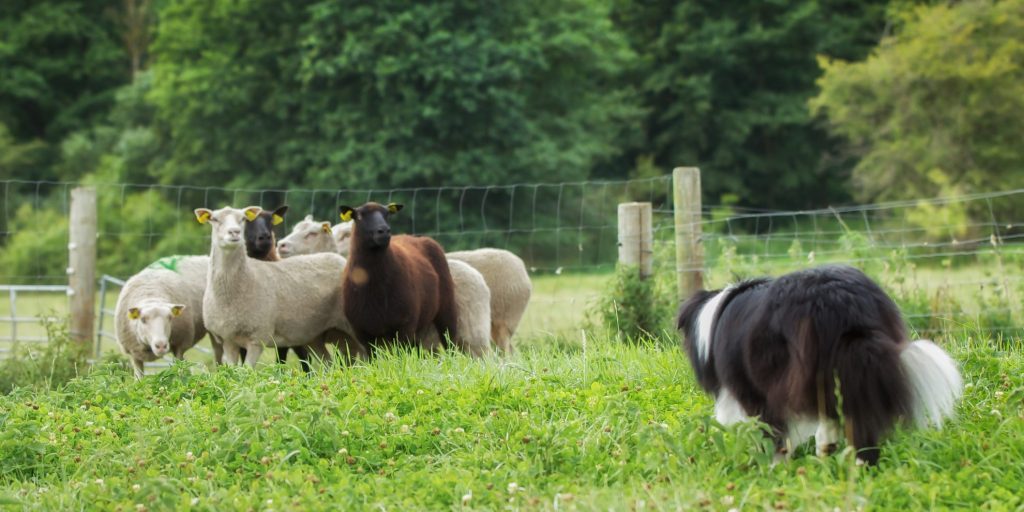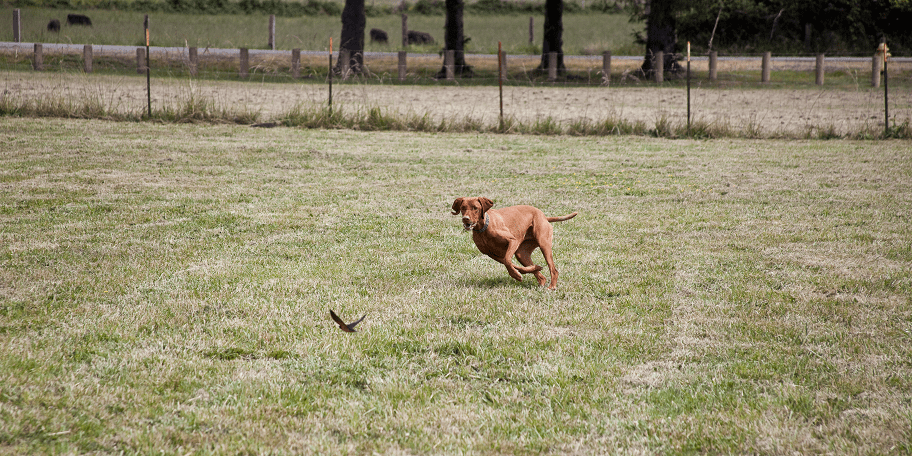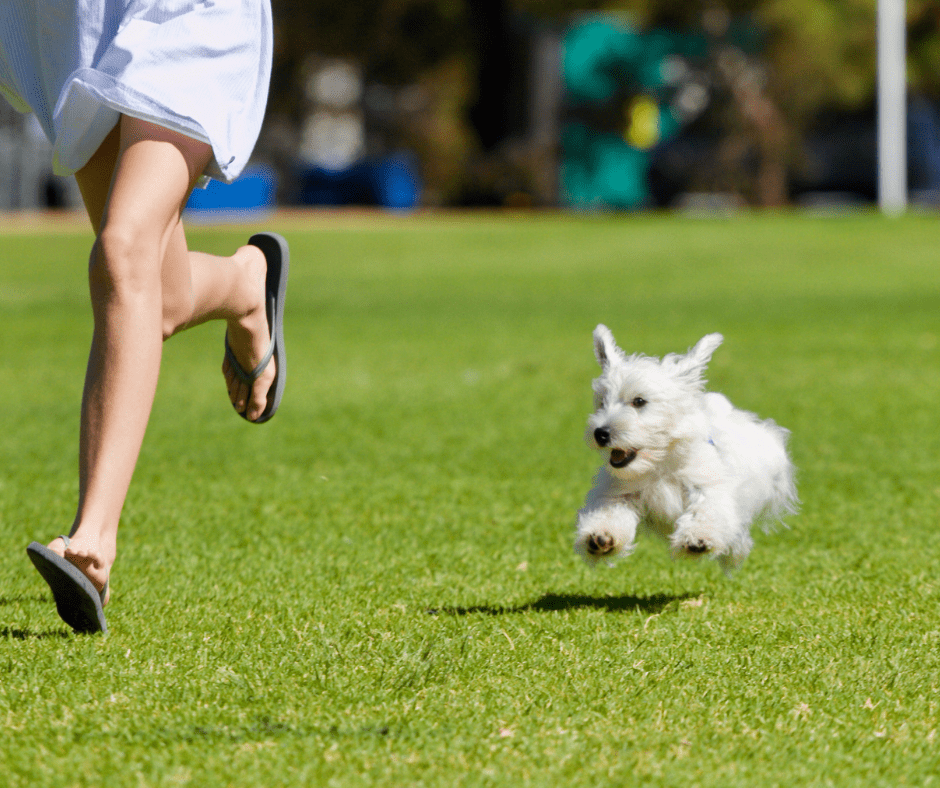Understanding Prey Drive In Dogs.
If you’ve ever lived with a dog that loves to chase – either other animals, dogs, cars, or even shadows – that’s a dog with prey drive. Prey drive is instinctive in many dogs and certain breeds show it more strongly than others. For more information on understanding prey drive in dogs – read our informative Holidays4Dogs article. You’ll find out why dogs do it and what you can do to discourage inappropriate chasing.
Prey drive in dogs refers to their natural instinct to chase and capture prey. Of course, dogs don’t necessarily need this skill any longer – but they still have a strong instinct to hunt. The desire to chase can manifest in different ways, depending on the dog’s breed, genetics, and training.
Many of the behaviours we see in domestic dogs, stems from their prey drive – from chasing a tennis ball, playing tuggy, or ripping things up – these are all associated with their innate desire to hunt.
Examples of prey drive in domestic pet dogs.
Herding dogs (like Border Collies) may stalk, or chase, without biting (although some will nip). This can present itself with herding dogs typically trying to herd people (joggers, cyclists), small children, other dogs, or any other moving object.
Terriers tend to have a strong bite/kill instinct because they were bred to hunt and kill vermin. This means they commonly tear up toys, soft furnishings, tree roots etc.
Sight hounds (like Greyhounds) may be visually triggered to chase anything that moves. They are sensitive to fast moving objects, particularly ones at a distance. This might be small animals like rabbits – (or cats!).
Hounds like Beagles and Basset hounds, have a strong sense of smell which helps them to detect prey. These dogs tend to be difficult to distract once they get their noses down on an interesting scent which may lead them to prey.
Can prey drive be a problem?
Prey drive in dogs can become a problem if it begins to pose a risk to other people, other animals, or even themselves. Some dogs can become so super fixated on chasing something, that they become unaware of their surroundings. They may run into the road, for example, in pursuit of their quarry. Some dogs may become so frustrated with being unable to chase something – they redirect their behaviour to something else, like nipping the owner who is trying to restrain them.
When dogs get into the prey drive ‘zone’ they can be challenging to re-direct, or get them to snap out it. This is why training and counter conditioning is so important. It is the key to managing prey drive while, at the same time, allowing the dog to engage in similar, but safe and controlled activities.
What is the best way to manage prey drive in dogs?
Managing prey drive in some dogs is so important. Otherwise, this behaviour can become unmanageable. However, it is vitally important that dogs are not punished for chasing.
Instead, the behaviour should be re-directed to something more controlled, but which still fulfils the dog’s instincts and provides enrichment. This process should always involve force-free, motivational training and counter conditioning. Below are some tips for managing prey drive behaviour.
Identify your dog’s triggers.
Work out what triggers your dog to engage in chasing behaviour. Is it fast moving animals, people, traffic? Or, is your dog more stimulated by smells?
Teach your dog a solid recall.
Teaching your dog to come back when called (recall training) is essential – but you need to make sure you put plenty of practice in before your dog is triggered. Use high-value rewards, practice in low distraction environments and build up slowly. Use a long line for extra security while you are training.
Controlled games.
Structured games and activities are ideal for dogs with a strong prey drive. Teaching your dog games like retrieve, or scent (search and find) can really provide your dog with safe outlets for their natural instincts. Other activities might involve a game with a ‘flirt’ pole, or frisbee.
Physical activity and mental enrichment.
Keeping your dog physically active and using up all that energy, does help. Equally, it’s important to provide enrichment for your dog, to keep the mind active. Prey drive can often be more profound in dogs that don’t have enough physical, or mental, stimulation.
Try longer, or more frequent walks, puzzle toys, trick training or, other canine sports. Anything that allows the dog to safely engage in prey drive behaviour should be the ultimate aim.
Counter conditioning.
When used in dog training canine classical conditioning can be a really powerful tool and well worth knowing about, especially if you need to help a reactive dog, or, indeed, a dog with a high prey drive.
By pairing a trigger – a squirrel, or jogger, for example – with something else, like high-value food – the dog will soon begin to associate the trigger with the appearance of food. If the dog isn’t food motivated, this could be a game with a tuggy instead.
Over time, this should eventually impact on their emotional response to the trigger – i.e. the dog should become much more relaxed when seeing the trigger.
Conclusion.
Thoughtful planning and care can ensure that prey drive in dogs doesn’t become problematic, or unsafe. By understanding prey drive and providing enriching activities and implementing positive training techniques, dogs can still experience the exhilaration of the chase – without the danger.





